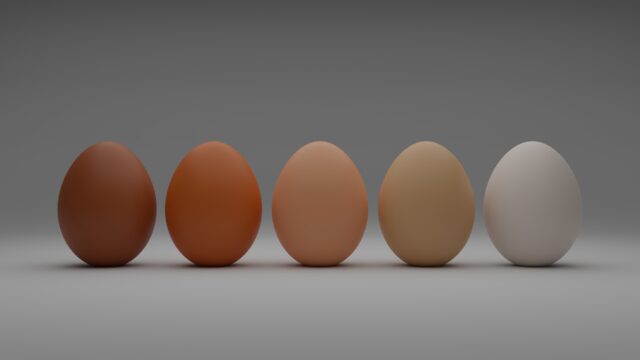Introduction
India is the third largest egg producing country in the world with an estimated production of 114.38 billion numbers (2019-20) from 215 million layers. Egg production in India is growing at a compounded annual growth rate (CAGR) of over 10.29 per cent. The egg has most of the nutrients which helps to develop a new life. In India per capita, availability is 86 egg per person. Most of the egg producing industries like Suguna, Venky’s, IB Group, Skylark produce eggs and chicken and sell in the market with their own brands. Egg having various other properties which can use to prepare other products, bakery products, drinks, dishes, pharma industries, animal feed, treatments etc.
Functional uses
A. Egg Used in Food Production
Egg products are invaluable in a huge variety of food production and processing industries. Different properties of egg like binding, emulsification, coagulation and adhesion are integral to the production of a large number of food products found in every supermarket.
- Confectionery
Egg acts as a binding agent for fondant and other soft fillings, improving the softness and texture and adding richness. Confectionery such as chocolate bars and fondant are stabilised by egg proteins.
- Dairy products
The addition of egg to ice cream and other frozen desserts improves consistency and decreases melting point. To eliminate crystallisation and ensure a smooth texture, eggs are included in frozen dairy products.
- Prepared foods and sauces
Egg gives a smoother texture to pre-prepared microwaveable dishes. Frozen microwaveable dishes which include egg have better freezing and thawing properties. Foods such as mayonnaise, salad dressing, dips and sauces are bound and emulsified by the addition of egg.
- Drinks
Egg whites act as a clarification agent in the manufacture of wine and some juices, inhibiting enzyme growth and prevent browning of the product. Adding egg to yoghurts and probiotic drinks gives a desirable creamy texture to the product.
B. Egg Uses in Bakery Sector
Properties such as binding, emulsification, coagulation and adhesion are integral to the production of a large number of food products in the bakery sector.
1 Bread:
Mostly egg added to the recipe it acts as a humectant, trapping moisture in starch molecules to prolong shelf life while preventing products from becoming soggy.
Egg keeps a stable pH in bread products.
Standard bread and rolls are given an egg wash to brown and glaze the crust, locking in flavour and aroma.
In speciality breads and rolls, egg gives flavour and structure as well as allowing ingredients such as seeds and grains to adhere to the bread.
All breads are given body, softness and smoothness by the addition of egg to the recipe.
2 Frozen bakery products
To prevent thawed products from becoming soggy, egg proteins act as insulators to maintain texture and palatability.
Control of crystallisation in frozen products is achieved by the addition of egg proteins, which stabilise the product during reheating and baking.
3 Cakes and other baked products
Cakes of all kinds depend on eggs to achieve volume and height. Egg proteins create foam, which results in a lighter and airier cake with a solid structure.
Meringues and other light items are aerated by the foaming effect of egg.
Binding in cakes, pastries, muffins and other bakes products can only be achieved through the use of egg, which gives a more desirable texture.
The addition of egg carries and enhances flavours in the product.
4 Custard fillings
The coagulating effect of egg acts to gel the filling and add richness.
Phospholipids and lipoproteins found in egg act as emulsifiers, maintaining oil and water emulsions to stabilise custards.
Xanthophyll pigments in egg yolk give a rich yellow colour to custard fillings.
5 Frosting and icings
Frostings, icings and fillings are improved by the addition of egg products. Egg proteins coagulate from a fluid state to a gel, which acts to thicken and the recipe.
Proteins in egg white prevent sugar crystallisation and promote smoothness in the finished product.
C. Egg Uses in Wider Field
Because of the functional capabilities of eggs, Liquid, frozen or dried egg products are utilised in the manufacturing process across a number of additional industries. There are various industries currently utilizing egg includes:
1. Cosmetics
- Egg white is frequently used in face masks.
- Egg yolk are used to made shampoos and conditioners.
2. Science
- Mostly in science egg is used as a medium for the growth of microorganisms, including viruses in the manufacture of vaccines. Lysozyme, found in egg proteins, is an antibacterial agent.
- Laboratory animals may be fed egg when a protein reference is required.
3. Animal feeds
- Normally yolks and whites are used in the manufacturing many pet foods.
- Grinded eggshells are given to laying hens as a source of calcium and protein.
D. Industries Use
- Face mask:- For creating a skin-firming face mask mix egg whites with a little bit of water. Egg whites help to reduce puffiness, leave pores looking smaller and are thought to have anti-aging properties.
- Leather cleaner: – Egg white has a sticky qualityso it makes them good at cleaning certain surfaces, in particular leather. Egg whites also form a protective covering for leather. Gently rub onto shoes, bags or even sofas, and then wipe off with a cloth.
- Glue: – Dry egg whites, become increasingly sticky. Although not particularly strong, but it works well as glue for paper or light cardboard.
- Hair conditioner:- Sperate the egg yolk and mix with water or olive oil for a rich conditioner then apply the mixture to your hair after shampooing and leave on for about 10 minutes.
- Biscuit decoration: – For preparing or decorating biscuit simplymixing egg yolks with water and use when baking biscuit. For example: spinach or parsley for green, baked beetroot for purple and saffron or chamomile for yellow
- Fertilizer: – As we know shell is the richest source of calcium, so simply crush the shells and add into the soil to increase the calcium content.
- Pan cleaner: – Adding crushed shells to soapy water for creating a natural abrasive cleaner to use on pots and pans. The rough edges help to remove tough stains, and possibly remnants of scrambled eggs!
- Seed holders: – After breaking the egg shell in two parts in same portion fill with soil, fertilizer and add the seeds. The calcium from eggshells can also help seeds to grow. After growing small seed it can be use as show purpose in the house.
- Pest repellent: – Egg shell has a rough surface, so when the crumble eggshells spread or sprinkle on your plants or soil, you can deter pests such as snails and slugs.
- Fabric whitener: – Used only clean shell of eggs and then put it into small cotton bag into your washing machine along with the laundry to whiten your whites.

Sachin Dongare1, Indrayani Gawas2, Mohit Bharadwaj3, Manoj Kumar Singh4
1 Ph.D. Scholar, Department of Livestock Production Management, Govind Ballabh Pant University of Agriculture and Technology, Pantnagar Uttarakhand
2 Ph.D. Scholar, Department of Plantation, Spices, Medicinal and Aromatic crops, College of Horticulture, Dr.Balasaheb Sawant Kokan Krishi Vidyapeeth,Dapoli, Maharashtra.
3 Ph.D. Scholar, Department of Animal Nutrition,Govind Ballabh Pant University of Agriculture and Technology, Pantnagar, Uttarakhand
4Assistant Professor, Department of Livestock Production management, SVPUA&T,Meerut,U.P.















